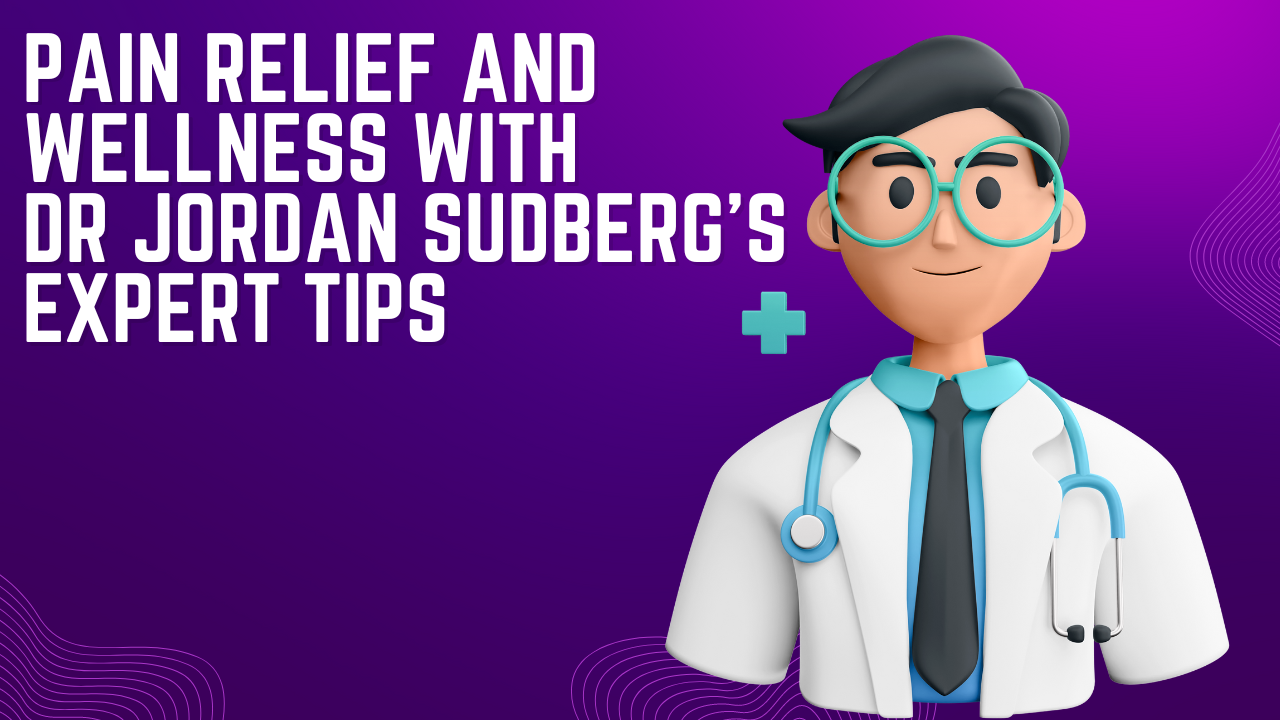Introduction
Are you searching for effective ways to manage pain and enhance your overall well-being? You’re not alone. Many people struggle with persistent pain, seeking solutions that can provide relief without compromising their health. Dr. Jordan Sudberg, a renowned expert in pain management and physical therapy, offers valuable insights into managing pain, improving physical and mental health, and incorporating beneficial exercise routines. In this blog post, we’ll explore Dr. Sudberg’s advice on these topics, providing you with practical tips and knowledge to help you live a healthier, pain-free life.
Understanding Pain Management
Pain management is crucial for improving quality of life. Whether it’s chronic pain or acute discomfort, effective strategies can make a significant difference. Dr. Sudberg emphasizes the importance of identifying the underlying cause of pain before deciding on a treatment plan. This could involve a combination of medication, therapy, and lifestyle changes. It’s also essential to work closely with healthcare professionals to tailor a pain management plan suited to your specific needs.
The Role of Physical Therapy
Physical therapy plays a vital role in pain management. It focuses on restoring movement and function through exercises and therapeutic techniques. Dr. Sudberg highlights how physical therapy can address various types of pain, from musculoskeletal issues to post-surgical recovery. By strengthening muscles and improving flexibility, physical therapy helps reduce pain and prevent future injuries.
Integrating Health & Wellness
Health and wellness are integral to pain management. Maintaining a balanced diet, getting adequate sleep, and managing stress are all critical components. Dr. Sudberg recommends a holistic approach, combining physical activity with mindfulness practices such as meditation and yoga. These practices not only alleviate pain but also enhance overall well-being, leading to a more fulfilling life.
Effective Exercise Routines
Regular exercise is a powerful tool for managing pain and promoting health. Dr. Sudberg suggests starting with low-impact activities such as walking, swimming, or cycling. These exercises are gentle on the joints while still providing cardiovascular benefits. Additionally, incorporating strength training and stretching can improve muscle tone and flexibility, further reducing pain.
The Importance of Consistency
Consistency is key when it comes to exercise routines and pain management. Dr. Sudberg advises creating a structured schedule that includes daily physical activity. Even on days when pain levels are higher, gentle exercises like stretching or yoga can provide relief without straining the body. Keeping a consistent routine helps build resilience and improves long-term outcomes.
Physical vs. Mental Health
Pain can affect both physical and mental health. Dr. Sudberg stresses the importance of addressing both aspects simultaneously. While physical therapy and exercise target the body, mental health support can address the psychological impact of chronic pain. Techniques such as cognitive-behavioral therapy (CBT) and mindfulness-based stress reduction (MBSR) are effective in managing pain-related anxiety and depression.
Balancing Activity and Rest
Finding the right balance between activity and rest is crucial for pain management. Overdoing it can exacerbate pain, while too much rest can lead to stiffness and decreased mobility. Dr. Sudberg recommends listening to your body and adjusting your activity levels accordingly. Incorporating rest days and allowing time for recovery can prevent burnout and promote healing.
Nutrition and Pain Management
Nutrition plays a significant role in managing pain. Anti-inflammatory foods such as fruits, vegetables, and omega-3 fatty acids can help reduce pain levels. Dr. Sudberg suggests avoiding processed foods and those high in sugar and trans fats, as they can contribute to inflammation. Staying hydrated and maintaining a balanced diet supports overall health and reduces pain.
Stress Management Techniques
Stress can intensify pain, making stress management an important aspect of treatment. Dr. Sudberg highlights relaxation techniques such as deep breathing, progressive muscle relaxation, and guided imagery. These methods help calm the mind and reduce the perception of pain. Regular practice of these techniques can lead to significant improvements in pain levels and overall well-being.
Building a Support System
A strong support system can make a big difference in managing pain. Dr. Sudberg encourages connecting with friends, family, and support groups. Sharing experiences and receiving emotional support can help alleviate the burden of chronic pain. Additionally, professional support from therapists and counselors can provide guidance and coping strategies.
Exploring Alternative Therapies
Alternative therapies can complement traditional pain management approaches. Dr. Sudberg mentions acupuncture, chiropractic care, and massage therapy as potential options. These therapies can provide relief by targeting different aspects of pain and promoting relaxation. It’s essential to consult with a healthcare professional before starting any alternative treatments to ensure they’re safe and appropriate for your condition.
Staying Informed and Proactive
Staying informed about pain management options and being proactive in seeking treatment is crucial. Dr. Sudberg emphasizes the importance of regular check-ups and open communication with healthcare providers. Keeping track of pain levels, triggers, and treatment outcomes can help tailor a more effective pain management plan.
Conclusion
Managing pain and enhancing well-being requires a multifaceted approach. By integrating physical therapy, exercise routines, stress management, and a balanced diet, you can take control of your pain and improve your quality of life. Dr. Jordan Sudberg’s expert advice provides a comprehensive guide to navigating pain management, ensuring that you’re equipped with the knowledge and tools needed to live a healthier, pain-free life. Ready to take the next step? Explore more resources and connect with professionals who can support your journey towards optimal health.
